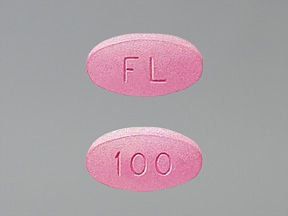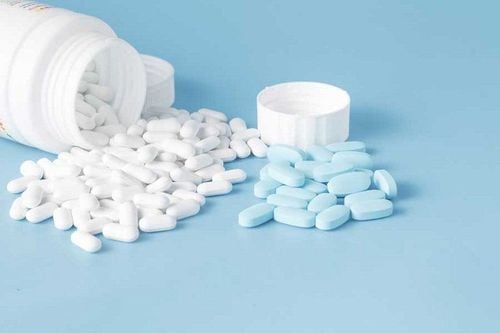This is an automatically translated article.
Most commonly used drugs are relatively safe for breastfeeding women. The dose received in milk is generally small and much less than the initial dose. However, it is important to understand the basic principles of what drugs should be administered to a nursing woman, as well as to be aware of the possible adverse effects on the infant when it is necessary to take the drug. during this period.
1. Issues of drug recommendations in nursing women
Breast milk has long been widely accepted as the best for babies. The breast milk benefits are very precious in the development of young children. Additionally, breastfeeding has benefits for the mother, such as increased bonding and relaxation, can be cost-effective, and provides other health benefits, including a reduced risk of cancer. breast and ovarian cancer. Accordingly, most experts recommend exclusive breastfeeding for at least 6 months and for up to 12 months while combined with solid foods.
However, during breastfeeding, many mothers experience health problems that require medication, including short-term episodes such as back pain or runny nose. This may raise questions about the safety of medications that can be used by nursing women.
In fact, although many medications are safe to take while breastfeeding, most will pass into breast milk to some degree, sometimes even affecting breast milk production. To be on the safe side, check with your pediatrician before taking any prescription or over-the-counter medications, herbs or supplements, or vitamins, and postpartum medications in general.

Có nhiều loại thuốc cho phụ nữ cho con bú có thể sử dụng
2. Characteristics of the drug for breastfeeding women
It is important to know how the drug passes into breast milk and what factors can affect this process.
The concentration of the drug in the mother's plasma: the higher it is, the easier it will be to passively diffuse into the milk. Binding to maternal plasma proteins: The more drug molecules bind to maternal plasma proteins, the more difficult it is to enter the milk than unbound drugs, so they can diffuse freely. Size of drug molecules: Most drug molecules, including alcohol, nicotine, and caffeine, are small enough to pass into milk. Level of ionization: Milk is generally slightly more acidic (pH 7.2) than maternal plasma (pH 7.4), thus attracting weak organic bases such as oxycodone and codeine. In contrast, weak organic acids such as penicillin tend to be ionized and retained in maternal plasma. Fat solubility: In addition to passive diffusion into the aqueous phase, lipid-soluble drugs are readily excreted by dissolving in milk fat droplets.
3. Instructions on how to use medicine for women after giving birth
If it is necessary to use medicine in a nursing woman, prescribe it with the lowest effective dose. Many of the drug's effects on the nursing infant are simply unknown. Therefore, take medication only when absolutely necessary, at the lowest dose and for the shortest time possible.
Temporarily discontinue breastfeeding (and milking) for drugs that are potentially toxic to infants, such as cytotoxics and radiopharmaceuticals for cancer treatment. The recovery of a drug will be determined by the half-life of each drug, so the mother may not continue breastfeeding if prolonged treatment with a highly toxic drug is required.
Select a topical treatment to minimize systemic exposure in the mother. For example, choosing a fiber laxative will be less absorbed than a stimulant laxative.
Choose drugs with a relatively short half-life, such as sertraline instead of fluoxetine, to minimize drug exposure in milk.
Advise the mother to breastfeed the baby before taking the medicine so that the drug concentration in the milk is at the lowest level; For many women, this is the last feeding the night before the baby goes to bed. However, this advice does not apply to drugs with long half-lives. Therefore, frequently re-evaluate the indications for use of these drugs, especially in the neonatal period.
Monitor the baby during the time the mother takes the drug to know the side effects of the drug and handle it in time.
Special precautions should be taken when administering the drug to women postpartum in premature (preterm) infants, because the size and organ systems of the infants are less developed than those of full-term infants.
If more than one drug or a combination is needed, follow the lactation recommendations for the drug that matters most.

Bạn có thể vắt sữa cho bé trước khi sử dụng thuốc cho phụ nữ cho con bú
4. Safety assessment of some commonly used drugs
41. Pain relievers Pain relievers such as paracetamol, ibuprofen, naproxen, and codeine are considered “safe” postpartum medications due to their low amount passed into breast milk and few problems with widespread use. .
On the other hand, although aspirin is low in breast milk, it is best avoided due to the risk of Reye's syndrome in the baby. Data on tramadol are limited so it is preferable to use well-known drugs such as codeine and paracetamol. Morphine is generally considered safe because of its low pass to milk and high first pass metabolism.
4.2 Antibiotics Antibiotics, including those commonly used, such as penicillins, cephalosporins, and macrolides, are generally indicated for nursing women despite their theoretical risks of altering the microbiome. enteric bacteria of the neonate and cause allergic sensitization.
The safety of metronidazole is controversial due to its high excretion in breast milk. Techniques that may be considered to minimize infant exposure include choosing an alternative antibiotic such as amoxycillin/clavulanic acid (such as Augmentin if appropriate), alternating breast and bottle feeding, or stopping breastfeeding. breastfed during treatment. If breastfeeding must be discontinued, the mother should be encouraged to continue expressing breast milk during antibiotic therapy, but expressing milk should be discarded. This action helps to maintain breast milk production and the mother can continue to breastfeed after stopping the drug.
The likelihood of tetracycline excretion into breast milk is low, but this class of antibiotics is generally avoided because of the possible risk of inhibiting bone growth or causing tooth staining in infants. Furthermore, fluoroquinolones should also be avoided during breast-feeding as it has been reported to cause rheumatic diseases.
4.3 The anticoagulant Heparin, whether unfractionated or low-molecular-weight, is indicated in lactating women because of its large molecular weight and difficulty in excretion into breast milk to a certain extent. considerable degree.
Warfarin is also considered a drug for postpartum women with anticoagulation targets because of its low metabolic time and side effects as well as changes in prothrombin time that have not been detected in breastfed infants. However, caution should be exercised when monitoring infant prothrombin time during treatment.
4.4 The anticonvulsants Carbamazepine, phenytoin and sodium valproate can be continued during lactation as no risk of CNS depression has been observed in the infant.
There are not enough published data to comment on the safety of gabapentin in breast-feeding.

Thuốc dành cho phụ nữ sau sinh có thể nhắc tới một số thuốc chống co giật
4.5 Antidepressants Selective serotonin reuptake inhibitors (SSRIs) are excreted in human milk to varying degrees. Paroxetine is reported to be the least likely to pass into breast milk while fluoxetine to a greater extent and its active metabolite norfluoxetine has a prolonged half-life of one to two weeks and may accumulate. in breastfed infants. Based on these data, paroxetine is the preferred SSRI for breastfeeding women.
In addition, most tricyclic antidepressants can be used in nursing mothers because of the low amount passed into breast milk.
4.6 Antihistamines Drugs such as promethazine, dexchlorpheniramine, and diphenhydramine are considered safe antihistamines when used extensively, although caution should be exercised when monitoring for evidence of increased risk of CNS effects in the neonate. born.
4.7 Drugs that may affect milk Drugs can affect the secretion or composition of milk through factors such as mammary gland development, lactation, and lactation hormone regulation. Prolactin is required for human lactation and can be affected by drug use. Dopamine agonists such as cabergoline reduce prolactin and are sometimes used therapeutically to stop lactation.
In contrast, dopamine antagonists such as metoclopramide and most antipsychotics can increase prolactin thus increasing milk production. Other drugs that have been implicated in causing hyperprolactinemia include SSRIs and opioids.
In summary, most commonly used medications are relatively safe for breastfed babies. Moreover, drugs for postpartum women are usually only used occasionally and only with caution. However, regardless of the indications, the drug for postpartum women should be used carefully, closely monitoring the health of the child during the time of taking the drug to detect abnormalities early and promptly handle them.
Please dial HOTLINE for more information or register for an appointment HERE. Download MyVinmec app to make appointments faster and to manage your bookings easily.













